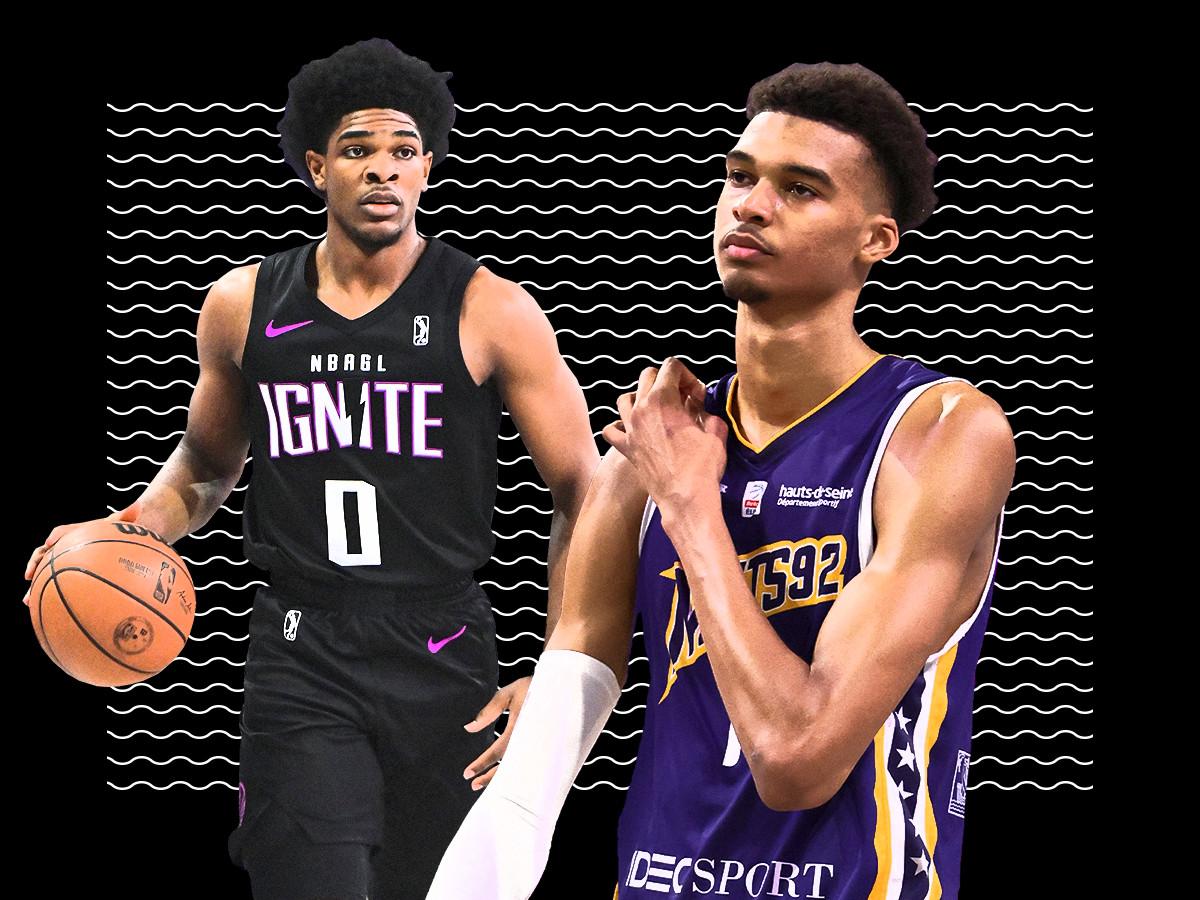Luka Doncic’s kiss farewell to league-level European basketball was planted almost exactly five years ago, with just over two and a half minutes remaining in Game 4 of the 2018 ACB Finals between Real Madrid and Baskonia. It arrived in the form of a rocking stepback, one-legged 3-point floater that left his fingertips with 0.2 seconds on the shot clock. It was a feat of pure imagination that made the Spanish announcers delirious: How does one adequately describe, in real time, the wonder of a shot that, in its setup and delivery, was unique in the annals of basketball history? Such is the thrill of Luka Magic, as the NBA world would soon find out. At his best, Doncic is a kid in a sandbox shaping impossible castles, impervious to the chaos around him.
Before the miraculous floater, Doncic’s Real Madrid had been leading by only three points; they ended the championship-clinching game up by 11. Luka didn’t attempt another basket. He didn’t need to. His work was done. And all he had to show for it was one of the greatest seasons in European basketball history: an ACB championship, a EuroLeague championship, EuroLeague MVP, and EuroLeague Final Four MVP—all at the age of 19. Days later, he was in the NBA, drafted third overall.
There was a split second, with less than a minute remaining in Thursday’s Game 3 of the LNB Pro A Finals between Metropolitans 92 and Monaco, when it seemed like Victor Wembanyama, 19, would have the chance to make his own magic, at the same spot on the floor that Luka had left his parting shot five years earlier. (Come to think of it, Wemby might best be described as an impossible castle.) The game was held at a neutral site, hosted at Roland Garros’s Court Philippe-Chatrier, where Iga Swiatek and Novak Djokovic had won their respective French Open titles mere days ago. The capacity crowd of 15,000 watched, all too aware that they could be witnessing the young phenom’s final French League game.
Down three in a must-win situation, Mets 92 set up a play on the sideline to get Wembanyama the ball, something they were incapable of doing in the game’s previous four minutes. Wemby popped out to the arc off a flare screen by teammate and potential fellow lottery selection Bilal Coulibaly. He caught the ball, squared up, and postured to suggest a Lillardesque sidestep 3-pointer … wouldn’t that have been iconic? It wouldn’t have taken too much to imagine the attempt, either; he’d drilled one earlier in the game:
But it wasn’t to be—with his defender crowding his airspace, with his season on the line, Wemby was forced to kick the ball out to a teammate for a far less likely 3-point heave. Monaco swept the Finals series, and in mere days, Wembanyama will be the first pick in the 2023 NBA draft and a San Antonio Spur. No fairy-tale ending here, but we’re in for a hell of a beginning.
Wembanyama, almost universally lauded as the best NBA prospect in 20 years, will be the first European player drafted no. 1 since the Toronto Raptors selected Andrea Bargnani 17 years ago. It kind of feels like a generational curse soon to be lifted, though with the benefit of hindsight, we know that it should’ve been broken five years ago. Any 2018 redraft would rank Doncic as the best player of his class, but his actual draft slot felt inevitable. Luka’s lack of obvious outlier athletic traits made his otherwise unimpeachable résumé susceptible to a stateside whataboutism from ACC fans, or whatever. (Doncic’s critics probably should have read more Sagan.) Wemby, with a wingspan that nearly encompasses the length of a Smart car, has no such issue. The sheer breadth of his body, much less body of work, leaves little room for doubt. Yet, for their clear differences, I can’t seem to shake the sense that Luka’s immediate entry into stardom informs not only Wembanyama’s path, but also the NBA’s role in lighting the way.
There is a level of investment in Wembanyama from the league—and not just the measly 133,000 euros that the NBA paid to acquire the broadcast rights to his French League games—that feels unprecedented. Maybe it’s just as simple as taking advantage of marked advancements in technology, the league having built an infrastructure for such a spotlight through a partnership back in 2016 with the all-encompassing sports tech company Sportradar, which powers the Wemby livestream on the NBA app. For a league that has long contended with the bugaboo of the international man of mystery, its coverage of Wembanyama has been an almost surreal about-face. The NBA has provided a level of access, attention, and situational context to Wemby that it has not afforded any other prospect in its history.
And it’s that context that is so vital, the opportunity to calibrate expectation and judge the talent of a prospect through the quality of their environment and opposition. I think back to the preseason exhibition between the Oklahoma City Thunder and Real Madrid in 2016, featuring a 17-year-old Doncic coming off the bench in a Real Madrid win. Even then, Luka’s talent was undeniable. He dusted Victor Oladipo on a couple of occasions, both in the open floor and in the half court; threw near-perfect entry passes to his bigs for easy scores; operated with poise in the pick-and-roll. It was a year before his formal breakout. But that exhibition was also the last time that an NBA team has competed against a EuroLeague team. That’s probably just business talking, but the withholding felt cruel, teasing an early glimpse of Doncic playing at an NBA level, only to be met with radio silence in the year that would become legend. The general NBA-viewing public would not be privy to the massive, star-making evolution that Doncic experienced in the twilight of his teenage years. Luka’s rookie season in the NBA—one of the greatest ever—might not have been such a surprise if it had been.
Perhaps from Luka’s example, the NBA has learned to properly set the stage. Fast-forward six years from that OKC–Real Madrid exhibition, nearly to the day—a fever dream. The two-game exhibition series between Metropolitans 92 and the G-League Ignite last October, pitting Wembanyama and presumptive top-three pick Scoot Henderson against each other, was an incredible feat of draft-nerd wish fulfillment akin to Magic vs. Bird in the 1979 NCAA championship game. The difference, of course, was control. It was an utter improbability that sparked the greatest player rivalry in modern basketball. The odds of Magic Johnson’s Michigan State and Larry Bird’s Indiana State both making the championship game were 1-in-1,600, a fraction of a tenth of a percent. Bringing Wemby and Scoot together took a few international phone calls and a handshake. If nothing else, the NBA has set a new operating standard for how it can market and highlight the emerging talent soon to enter its pipeline—I wonder whether the likes of Cooper Flagg and Cameron Boozer might receive similar treatment down the line, or whether this Wemby moment is simply capturing lightning in a bottle. In a post–Last Dance world, it’s clear that the league wants to preserve, in-house, these early glimpses of greatness where it can get them. The league is thinking bigger; can its teams?
There is a fundamental rub with the draft: It is an exercise in imagination staged for a results- and profit-driven league that’s largely had the imagination beaten out of it for the sake of self-preservation. The front office regimes in Phoenix and Sacramento that called the shots during the 2018 draft are not the regimes that have led those respective teams to success in the present; missing out on a Luka will do that. The idea behind drafting Deandre Ayton and Marvin Bagley no. 1 and no. 2 is backed by history: Athletic big men with blue-blood pedigrees inherit the league, and to that point, not one European guard drafted in the lottery had ascended to stardom. But in conversations with a longtime NBA executive who, in 2018, was working for a team in position to draft Doncic, the case for Luka was easy: “One of the things that I mentioned to one of our scouts as we were talking about it was, I can come up with maybe only four or five players that could have done what Luka did when he was [19] years old,” the executive told me. “If we go through modern basketball … it’s hard to come up with anybody that could do what Luka did. That’s a huge endorsement of a player.” The aforementioned names? LeBron, Kareem, Ralph Sampson. Those were the only names he could list with confidence—three names that Wembanyama has been regularly compared to, in one form or another.
It’s fair to wonder whether Wembanyama, had he elected to stay with his previous EuroLeague-tier team, ASVEL, could have reached similar heights at the highest level of competition available to him (for what it’s worth, Wemby led the EuroLeague in blocks per game last season, and nearly had a clean sweep of all the French League end-of-season honors this year). The biggest question marks surrounding Wembanyama are about strength and durability, which would have been put under much higher scrutiny with a EuroLeague team’s grueling schedule. But it’s also impressive to see Wembanyama chart his own course and reach certain benchmarks of growth on his own terms. He does not lack for imagination. Which might be why Luka’s final shot for Real Madrid has stuck in my thoughts as I’ve watched Wembanyama develop over the course of this season.
I’ve thought about how quickly five years can pass by, and how influence can take the form of coincidence.
Luka’s 3-point floater (which he’s hit enough of in the NBA to merit a compilation) encapsulates his superpower: the ability to deaden his external momentum to elude the defense, and in that moment summon a contradictory soft-serve swirl of brute strength and near-telekinetic finesse to create a scoring possession, be it a shot or a pass.
Wembanyama has gone viral a number of times over the past year for a similar shot in his bag, for what could one day become a signature: a running, one-legged 3-point floater. It’s an absolutely preposterous notion of a shot—a spiritual successor to fellow countryman Tony Parker’s teardrop floater, reenacted by Zeus. It takes certain cues from the sheer unblockability of Kareem Abdul-Jabbar’s sky hook, Dirk Nowitzki’s goofy-footed fadeaway, and Nikola Jokic’s Sombor Shuffle—but with a difference. Each of those aforementioned shots turn and move the player away from the basket, a motif that has more or less recontextualized the game of basketball over the decades, further cemented by the popularity of the modern stepback jumper: This is where the game is headed. Wembanyama’s runner posits the inverse: No, that’s where the game has been. From behind the arc, the game’s enduring frontier line, the 7-foot-4 Wembanyama leaps forward, not backward.
For now, though, it’s mostly a gimmick, a brandishing of his supernatural balance and ability to access deep-shooting trajectories, available only to a handful of players across basketball history. Giants have roamed the league for its entire existence, but few will have been given the creative latitude Wembanyama will soon attain. Even fewer have had his spirit of innovation, with a frame capable of exacting the scope of his ambition. Wembanyama is a logical endpoint to the expanded imagination of basketball’s past half century. Perhaps that, above all else, is what the basketball public is latching on to: the anticipation of unprecedented awe.

